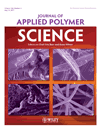Dendrimer finishing influence on CO/PES blended fabrics color assessment
Abstract
Textile finishing includes all processes that help to maintain the value or increase the value of the textile material. It encompasses dyeing, printing, and all the finishing treatments to realize durable press, soil release, flame retardant, antistatic, antimicrobial, or water/oil repellency properties. When these properties are realized on dyed textile fabric, one effect could be ascribed to the color change induced by finishing operations. This research focuses on the assessment of color alterations occurring on the dyed cotton/polyester blended fabrics due to the nanoparticle-sized dendrimer (DWR), dendrimer–fluorocarbon (DWOR), and fluorocarbon (FWOR) finishing onto their surfaces. The dependence of color on the surface state of treated textiles is calculated in the context of spectrophotometric measurements. Modification of the surface roughness by reflectance spectrum and the absorbance of finishes in visible range were investigated to determine color changes between the original (control fabric, dyed but not treated) and treated fabrics. As a result of color matching calculated by CIE-Lab values, color change is related to the surface roughness associated with absorbance values of applied finishes. In addition, fabrics mechanical properties were evaluated to estimate if finishing agents application gives rise to other changes, besides color alterations. The fabrics mechanical properties have been found not significantly altered by the aforementioned finishing treatments. These results could be applied for industrial needs (quality control), or in the artistic field of conservation, or restoration (to follow the color of paintings). © 2010 Wiley Periodicals, Inc. J Appl Polym Sci, 2011




